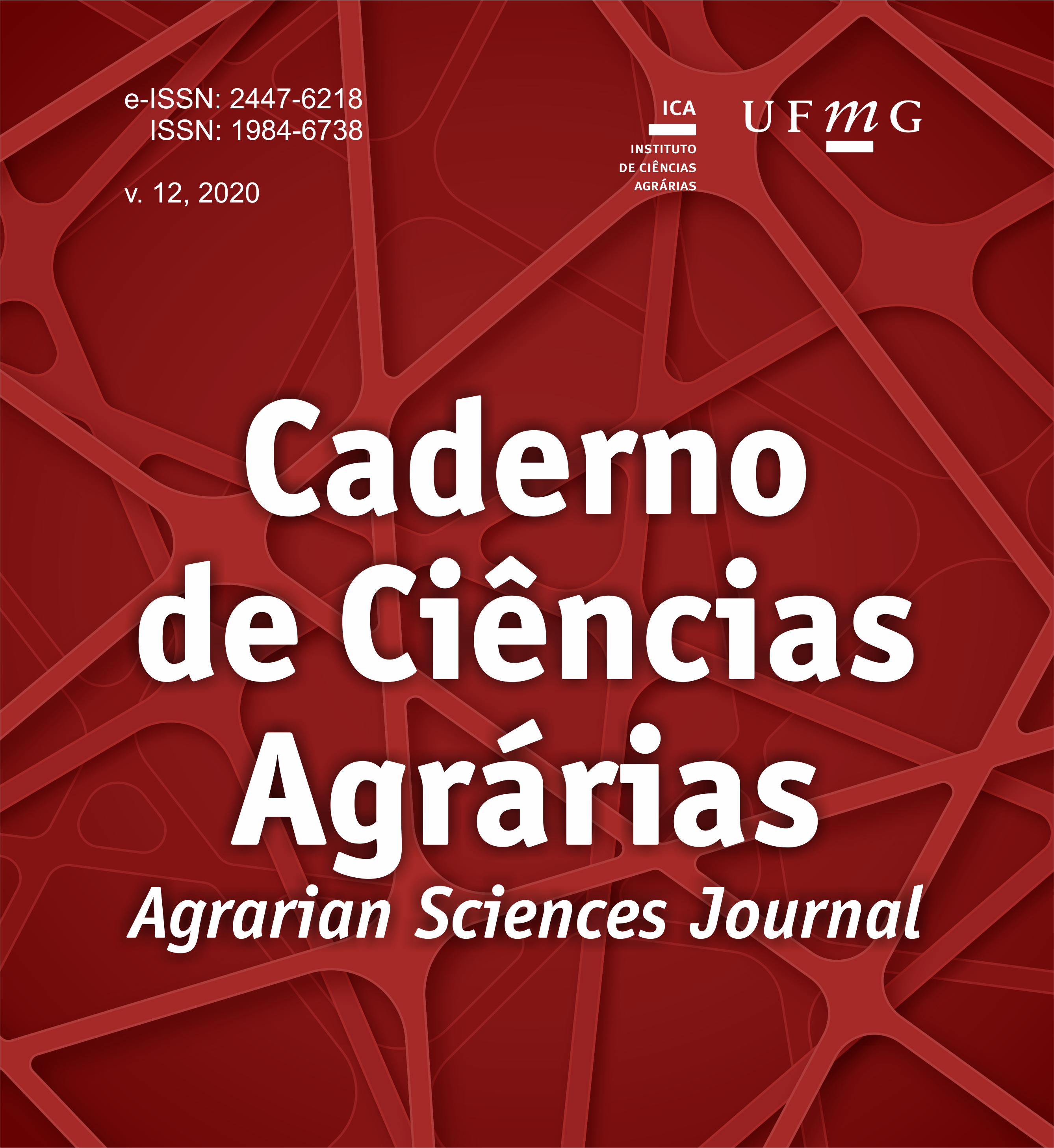Spatial distribution of coffee crop productivity in Minas Gerais over time
DOI:
https://doi.org/10.35699/2447-6218.2020.26171Keywords:
Moran’s I, Spatial autocorrelation, Spatial StatisticsAbstract
Brazil is the world's largest coffee producer and the state of Minas Gerais is responsible for half of the Brazilian production. However, productivity is unevenly distributed throughout the state. Therefore, the purpose of this study is to analyze the spatial distribution of coffee productivity in Minas Gerais from 2002 to 2017, a valuable information to identify regions where coffee production may be more promising in the future. This paper investigates the existence of spatial dependence of productivity between regions (using Moran's I), its dynamics throughout the period and the presence of clusters of high and low productivity (using local Moran's I). The results show that the spatial dependence of productivity was stronger from 2002 to 2009 than between 2010 and 2017. Some regions with small coffee areas but high productivity have stopped producing the crop whereas some of those with large areas but low productivity increased their productivity levels. Therefore, there is a tendency of homogenization of productivity in Minas Gerais, with values close to 30 bags per hectare.
Downloads
References
Almeida, E. 2012. Econometria espacial aplicada. Campinas, Alínea.
Almeida, E.; Pacheco, G. O.; Patrocínio, A. P.; Dias. S. M. 2006. Produtividade do café em Minas Gerais: uma análise espacial. Anais do XLIV Congresso Brasileiro de Economia e Sociologia Rural, Fortaleza, CE, Brasil. Disponível em: https://bit.ly/3gxorl8
Anselin, L. 1996. Interactive Techniques and Exploratory Spatial Data Analysis. Disponível em: https://bit.ly/386MT9x
Centro de Estudos Avançados em Economia Aplicada - CEPEA. PIB do Agronegócio Brasileiro. Disponível em: https://www.cepea.esalq.usp.br.
CONAB. Companhia Nacional de Abastecimento. Acompanhamento da safra brasileira de café, v. 5, safra 2018. Brasília-DF. Disponível em: https://www.conab.gov.br/info-agro/safras/cafe
Instituto Brasileiro de geografia e Estatística - IBGE. 2017. Divisão Regional do Brasil em Regiões Geográficas Intermediárias e Regiões Geográficas Imediatas: 2017. Rio de Janeiro. Disponível em: https://bit.ly/2W18gTV
______. 2019. Produção agrícola municipal. Sistema IBGE de Recuperação Automática - SIDRA, Tabela 1613, 2019. Disponível em: https://sidra.ibge.gov.br/tabela/1613
International Coffee Organization - ICO. 2018. Total production by all exporting countries. Disponível em: https://bit.ly/39YPSDt
Neves, M.; Luiz, A. 2006. Distribuição espacial da cultura do café no estado de São Paulo. Boletim de Pesquisa e Desenvolvimento. Jaguariúna: Embrapa Meio Ambiente. Disponível em: https://bit.ly/3gzNjZR
Souza, R.; Perobelli, F. 2007. Diagnóstico espacial da concentração produtiva do café no Brasil no período de 1991 a 2003. Revista de Economia e Agronegócio, v. 5, n. 3: 353-377. Disponível em: https://bit.ly/2W2ItKY
Teixeira, R.; Bertella, M. Distribuição espaço-temporal da produtividade média do café em Minas Gerais: 1997-2006. Análise Econômica, ano 33, n. 63, 2015, p. 275-299.
Published
How to Cite
Issue
Section
License
Copyright (c) 2020 Agrarian Sciences Journal

This work is licensed under a Creative Commons Attribution-NonCommercial-NoDerivatives 4.0 International License.
Authors who publish in this journal agree to the following terms:
The Copyright for articles published in this journal follow authorship. The articles are open access, with their own attributions, in educational and non-commercial applications.
The journal reserves the right to make regulatory, orthographic and grammatical changes in the originals, with the aim of maintaining the standard language and the credibility of the vehicle. It will respect, however, the writing style of the authors.
Changes, corrections or suggestions of conceptual order will be forwarded to the authors, when necessary. In such cases, the articles, once appropriate, should be submitted for further consideration.
The opinions issued by the authors of the articles are their sole responsibility.







